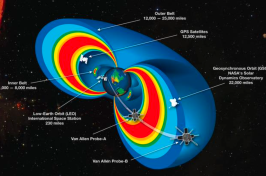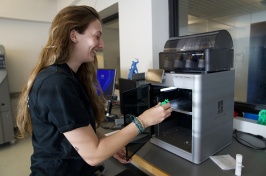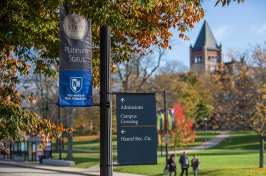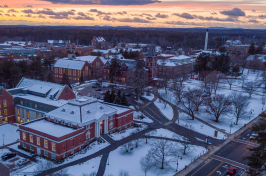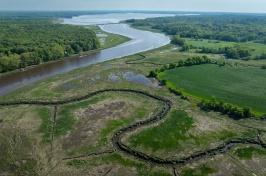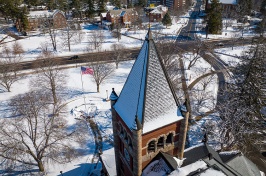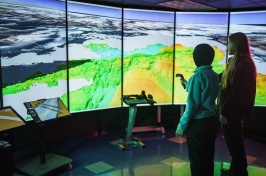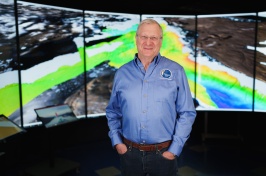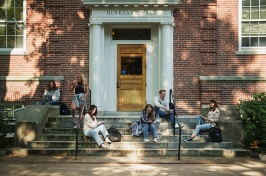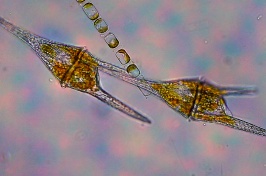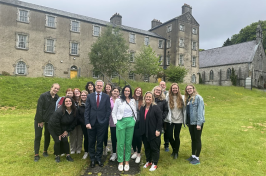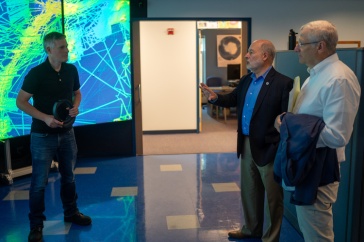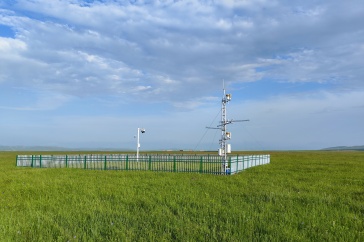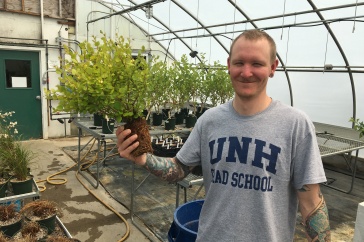
When Captain Andy Armstrong, the National Oceanographic and Atmospheric Administration (NOAA) co-director of the UNH/NOAA Joint Hydrographic Center, first learned that a basin in the Gulf of Mexico would be named in his honor, he thought it was a mistake. “I said, ‘Are you sure? There are lots of Armstrongs in the world,’” he says. “At first I wondered if they thought I was dead, since seafloor features are often named for deceased individuals.”
Armstrong, who is assigned to the Joint Hydrographic Center as a civilian NOAA employee, was captain and chief hydrographer of the NOAA hydrographic ship Whiting when it mapped the underwater terrain of the northwestern Gulf of Mexico that included his now-namesake basin in 1992, using what was then the most advanced technology available. “You got a bunch of numbers back, then after the fact you could print up contour sheets,” he explains. “It was different than the systems we have now, where you can perceive the seafloor as you go.”
Compiling a more detailed seafloor map of the area recently using cutting-edge data visualization technology Armstrong and his UNH peers have helped develop, a team of oceanographers from Texas A&M University proposed that the basin be named after Armstrong. The feature lies just beyond the edge of the continental shelf some 100 miles south of Gavelston, Texas.

UNH Center for Coastal Ocean Mapping director Larry Mayer jokes that while Armstrong’s basin may be a large depression — roughly 10 by 30 kilometers in area and ranging in depth from 325 to 450 meters — his presence at UNH has been anything but. “Andy has been a tremendous contributor to the success of the centers and a great supporter of state-of-the-art hydrography throughout the community,” he says. “We are very proud that his contributions have been recognized by this great honor.”
Armstrong isn’t the only UNHer to have a discovery named in his honor. While conducting undergraduate research on truffles at Bartlett Experimental Forest in Bartlett, New Hampshire, Tyler Remick ’15 unearthed what proved to be two previously undescribed species along with a wide variety of previously documented varieties of the fungus. While the formal names are still under review, one of the two species will be named for the area it was found, and the other for Remick himself.
Originally published in UNH Magazine Fall 2016 Issue
-
Written By:
Beth Potier | UNH Marketing | beth.potier@unh.edu | 2-1566










